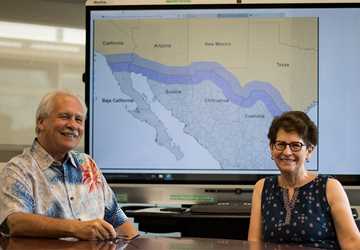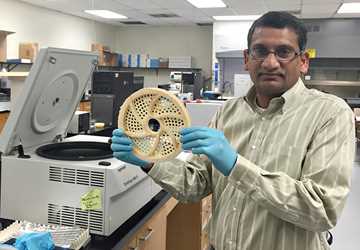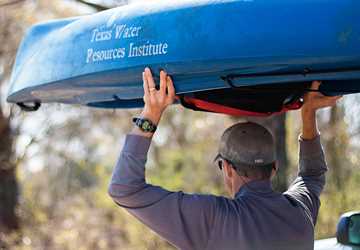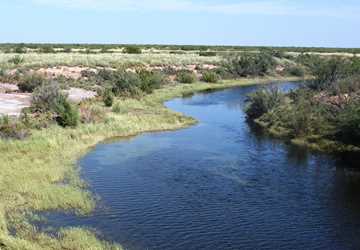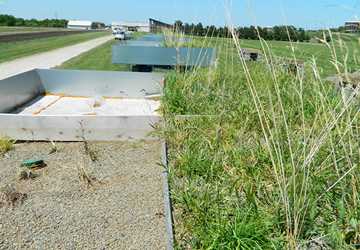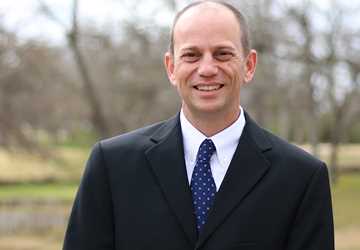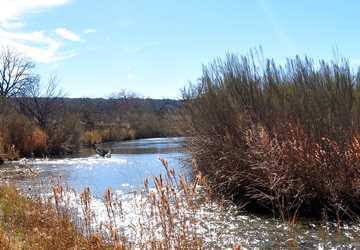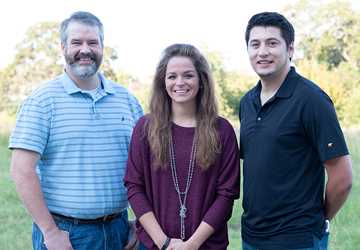Wagner leaves TWRI to become Oklahoma water center director
Dr. Kevin Wagner, former deputy director of engagement for the Texas Water Resources Institute (TWRI), became director of the Oklahoma Water Resources Center at Oklahoma State University (OSU) in Stillwater on July 31.
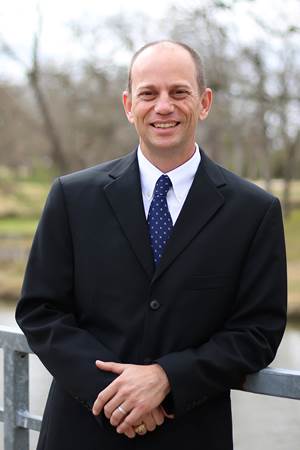
As director of the center, he works with faculty from 11 academic departments at OSU, including the Division of Agricultural Sciences and Natural Resources’ nine departments, Extension experts and other universities throughout the state to help address the state’s critical water resources issues. He also serves as the Thomas E. Berry Professor of Integrated Water Research and Management and as an associate professor in the university’s Plant and Soil Science Department.
Both TWRI and the Oklahoma Water Resources Center are part of the National Institutes for Water Resources, established by the federal Water Resources Research Act and supported by the U.S. Geological Survey.
Wagner, who served in various positions at TWRI for 12 years, had a tremendous impact on advancing watershed planning and water quality issues in the state, according to Dr. John C. Tracy, TWRI’s director.
Tracy said Wagner also increased engagement with the water resources community across Texas and the nation during his time at the institute.
“Dr. Wagner was hugely responsible for the institute’s increased work with state water agencies, and, as a result, the institute and stakeholders in watersheds throughout the state were able to make significant progress in addressing water quality impairments,” Tracy said. “He also provided effective leadership and administration of the institute’s numerous water programs.”
TJ Helton, Texas State Soil and Water Conservation Board (TSSWCB) Nonpoint Source Programcoordinator, said Wagner continually demonstrated his leadership in tackling the magnitude of water quality issues faced by Texans.
“Dr. Wagner was a fundamental partner to TSSWCB for the past 12 years,” he said. “Through this partnership, there were multiple initiatives developed and implemented to address water quality issues across the state.”
For example, Helton said, TSSWCB worked alongside Wagner and others to develop the Texas Bacterial Source Tracking Library, making it one of the first of its kind.
The library, a joint program of TWRI, Texas A&M AgriLife Research and The University of Texas Health Science Center at Houston School of Public Health in El Paso, is used to identify and also rule-out significant sources of E. coli pollution in watersheds.
“This library will continue to be used as a tool for future watershed planning efforts,” Helton said.
Wagner also led the Texas A&M University System’s work with the Ogallala Aquifer Program (OAP), a research-education consortium finding solutions to declining water availability from the Ogallala Aquifer in the Texas High Plains and western Kansas. The consortium is led by the U.S. Department of Agriculture’s Agricultural Research Service (ARS) and partners with three other universities.
“Dr. Wagner was an inspirational leader guiding the Texas A&M AgriLife Research and Texas A&M AgriLife Extension Service portion of the OAP,” said Dr. David Brauer, OAP’s program manager and a research agronomist for ARS. “Dr. Wagner’s leadership was responsible for the OAP receiving an award for excellence from the U.S. Secretary of Agriculture.”
Wagner said he really appreciated his time at TWRI and believes his work at TWRI prepared him to lead the Oklahoma Water Resources Center.
“I do look forward to using all the knowledge and experience gained at TWRI to lead the Oklahoma center and enhance collaborations in the region,” he said.
Wagner received his doctorate in agronomy from Texas A&M University, his master of science in environmental science from Oklahoma State University and his bachelor of science from Howard Payne University.



